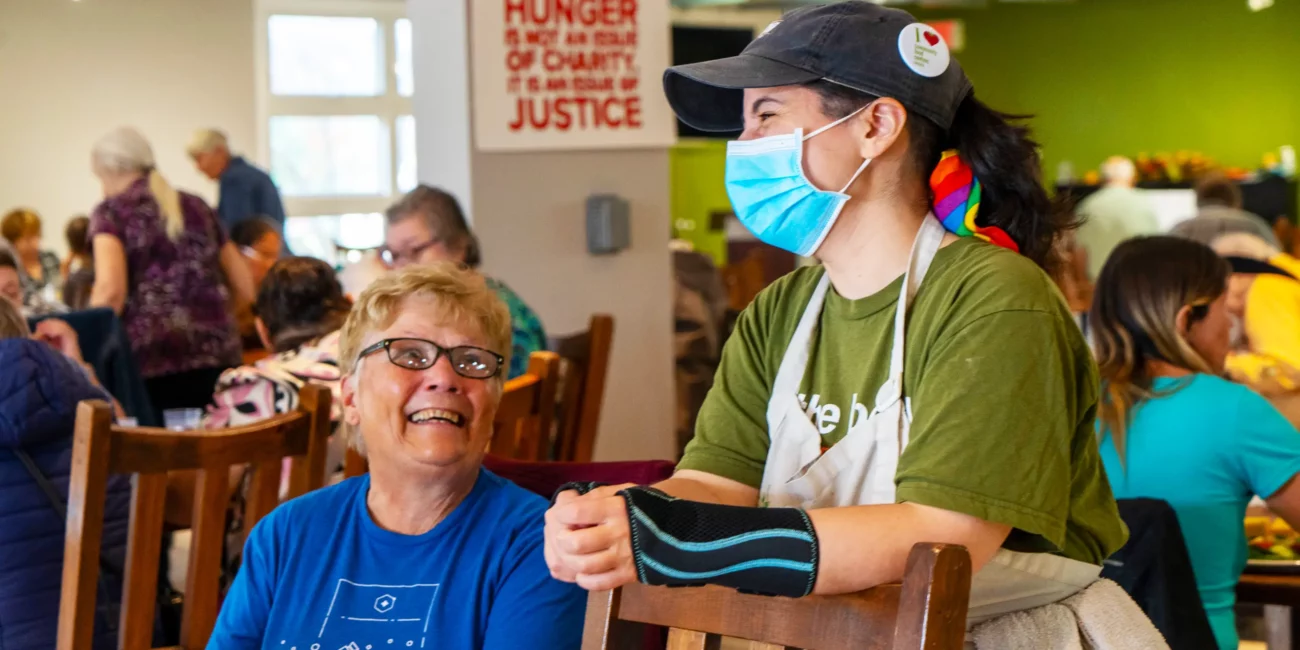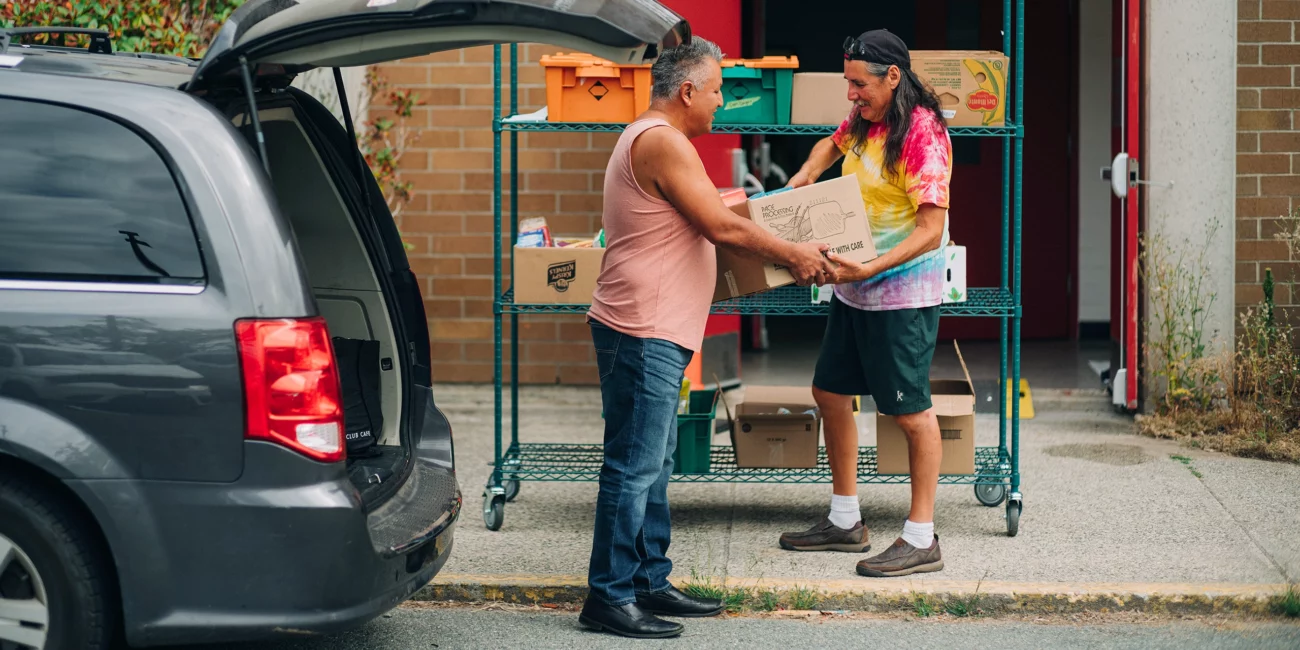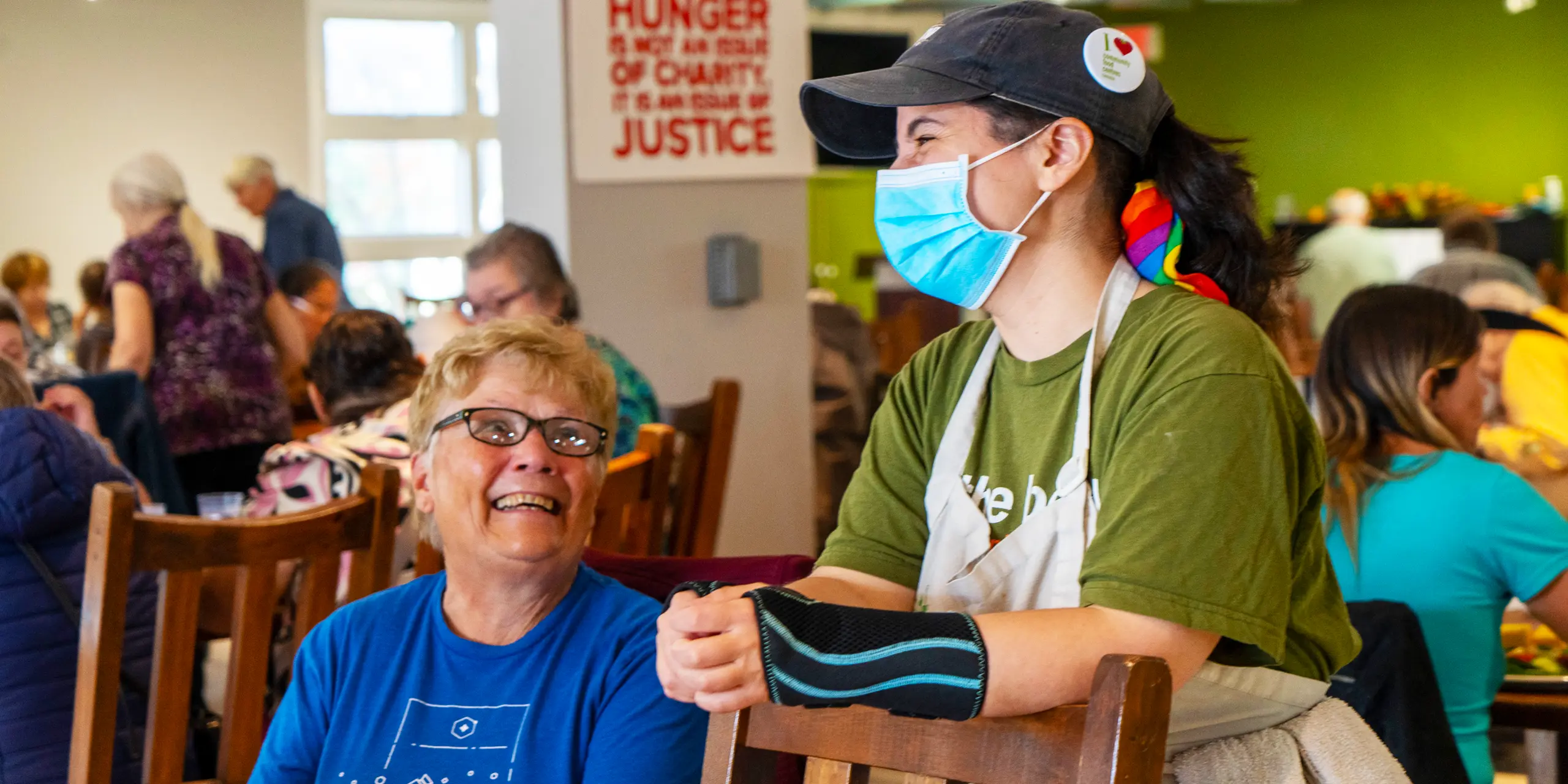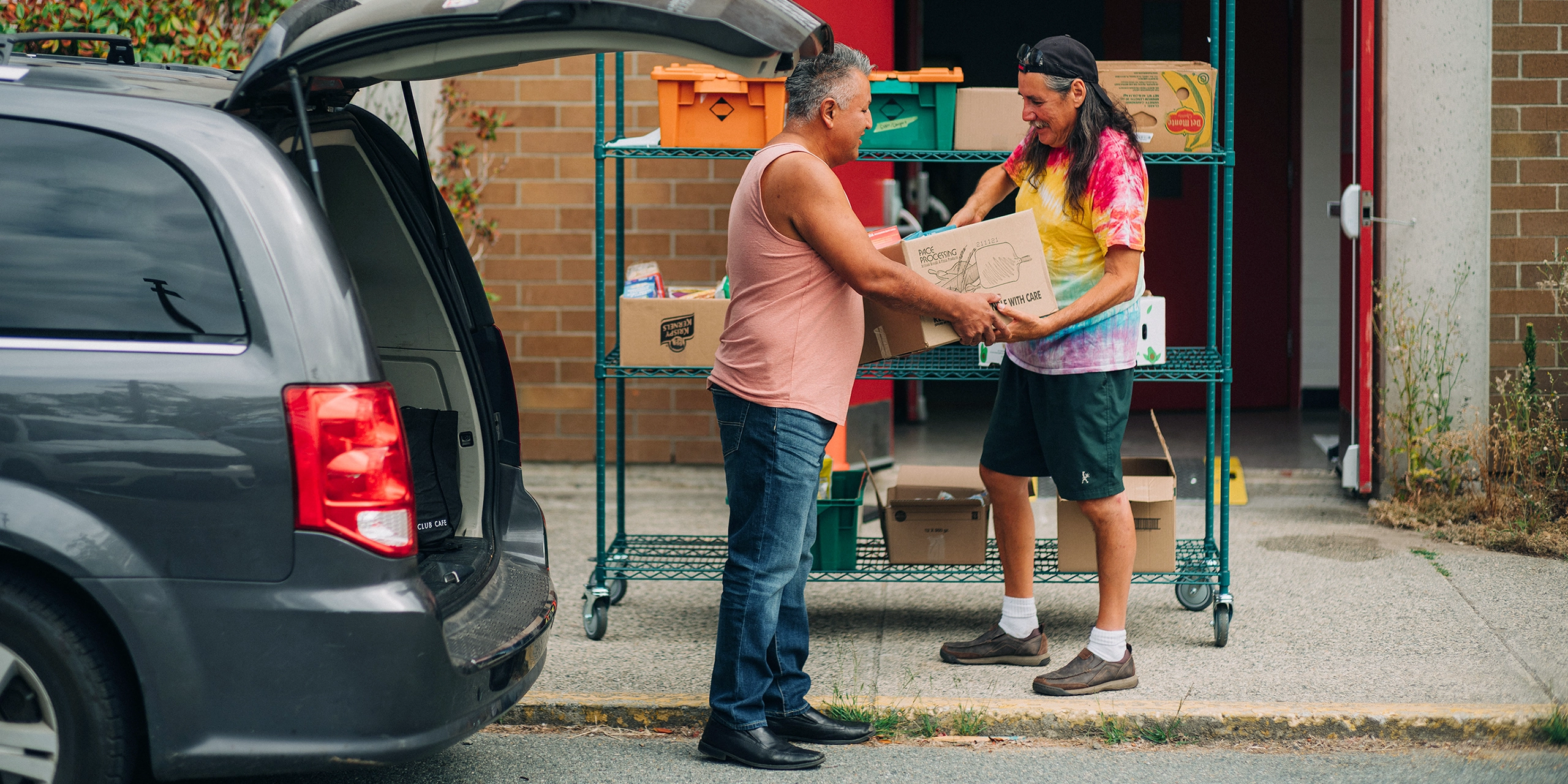Early adopter
From the beginning, Nancy Wildgoose understood that charitable food handouts will never be enough to end food insecurity and poverty. That’s why she championed CFCC’s community-building model and The Table became one of the first Community Food Centres in Ontario.
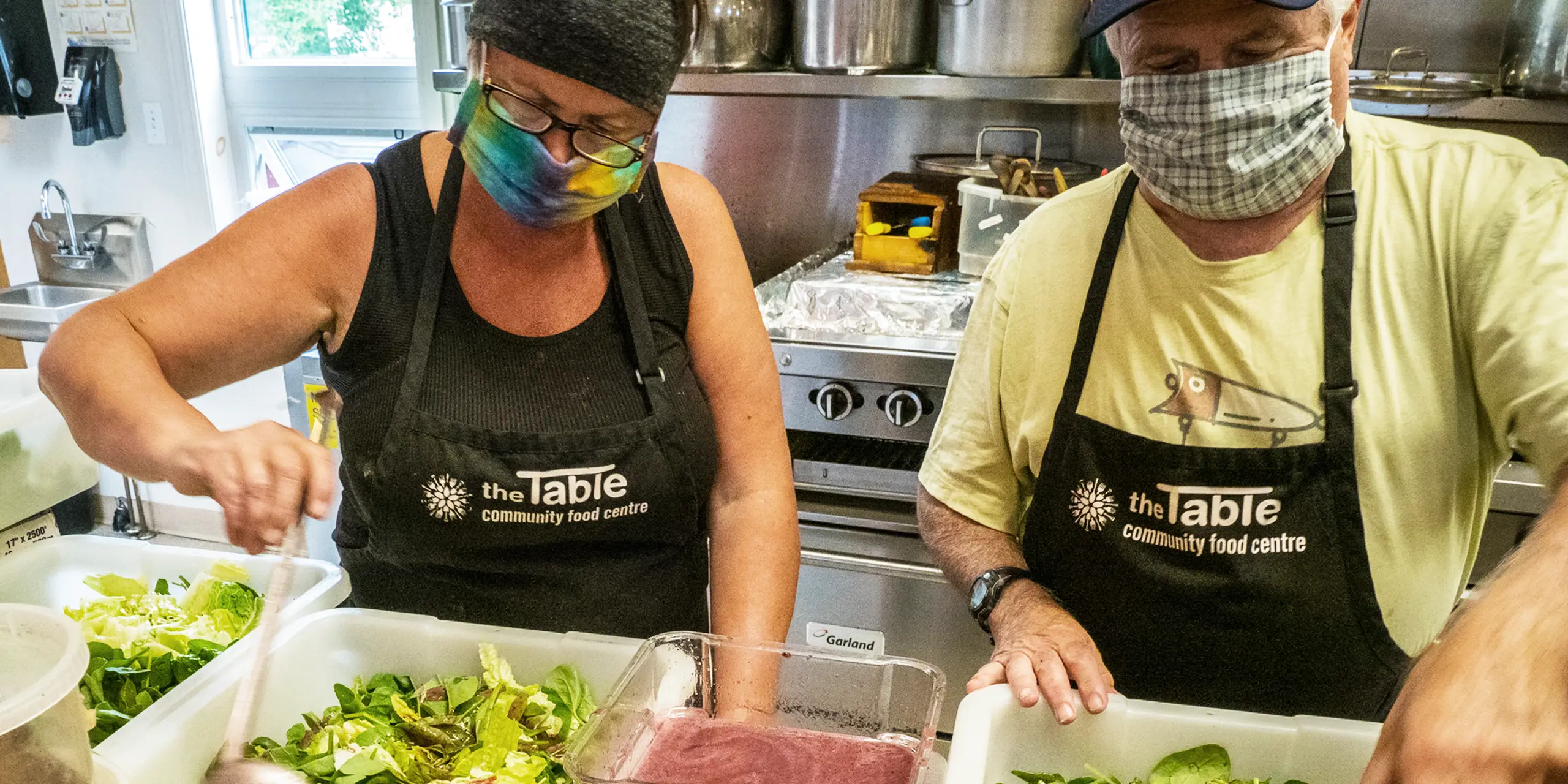
Nancy Wildgoose was standing in a grocery store in Perth, Ontario, when she got the call. The local food bank, where she served as a board member, had been chosen as one of two pilot sites for the Community Food Centre (CFC) model.
“It was one of the most exciting moments in my life. I burst into tears,” she recalls. “I was thinking how positive it would be for our community. The board and team of community-minded people in Perth who had supported our bid were inspired by the CFC model. It was time to move beyond simply handing out prepackaged food baskets.”
The photo above shows volunteers at The Table Community Food Centre preparing a community meal.
Share this story
Nancy Wildgoose was standing in a Perth, Ontario, grocery store when she got the call. The local food bank, where she was a board member, had been chosen to be one of the first two pilot sites for the Community Food Centre model.
“It was one of the most exciting moments in my life,” the former librarian and longtime government bureaucrat recalls. “I actually burst into tears. It was such a thrill because I was thinking how positive it would be for people. We were taken with the vision. We knew it would be so much broader than handing out a prepackaged food basket. It’s a relationship. The creation of a community.”
In 2012, Nancy became the first Executive Director of The Table CFC in this small town in eastern Ontario. The centre moved from an unheated garage to a large, renovated space with an open kitchen and dining area, and eventually, dug deep with a huge, bountiful community garden off-site.
Despite some initial resistance to the shift away from strict food banking, The Table quickly won people over with its friendly staff, welcoming space and responsive programming. This included communal meals, food literacy for kids and advocacy on issues—like affordable housing—that affect people in the rural region.
After 10 years, The Table is now a Perth landmark. “Community Food Centres are needed more and more all the time,” Nancy, who has since retired, explains. “There are the programs and advocacy, helping amplify low-income people’s voices. But what’s also so important is the gathering together, developing trust, feeling like you belong. It has such an impact.”
During the pandemic, The Local closed to in-person meals, but Susan was one of hundreds of community members who received hot food delivered by volunteers three times a week. She missed her friends, but these healthy meals, dropped off at her door, were a lifesaver after a 2020 stroke left her in hospital and rehab for months, then unable to drive or use her stove afterward. Sometimes the volunteers would even help clear the snow from her walk. “They always had a kind word—they really went above and beyond,” says Susan.
Some of her old crowd have passed away, but she’s found new people to sit with during community meals. And she’s also accessing supports, like referrals for mental health services and a nurse practitioner who can test her blood sugar. “I feel so welcome there,” Susan says. “People are wonderful. They make me feel supported. I truly feel part of this place.”
Share this story
